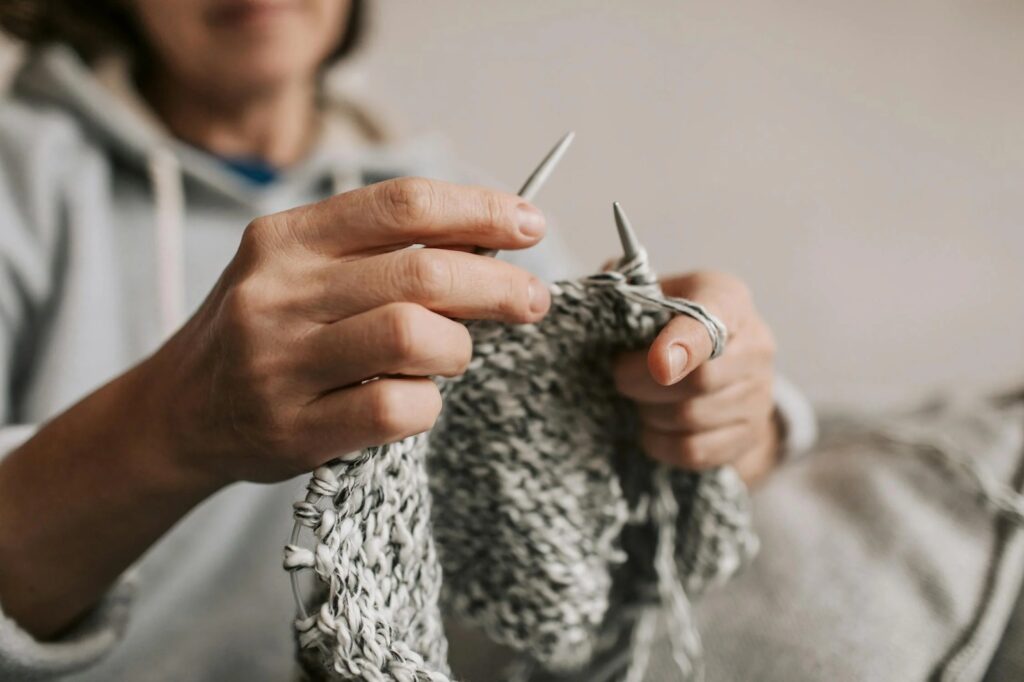So, you’re thinking about making a sweater and need to know what weight of yarn is best. Picking the right yarn weight is key because it affects not just the look but also the feel and warmth of your sweater.
Too heavy, and the sweater might feel bulky; too light, and it might not be warm enough. If you check out various men’s crochet sweater collections online, you’ll notice they often list the yarn weight, which can guide you in your choice.
Understanding these differences will help you create a sweater that’s comfy and stylish, making it a personal favorite rather than just another piece of clothing.
Key Takeaways
- Worsted weight yarn balances warmth and thickness, ideal for most sweater projects.
- DK weight yarn is lighter, suitable for mild weather and detailed patterns.
- Aran weight yarn provides more insulation, perfect for cold climates and outdoor wear.
- Sport weight yarn offers a lighter feel, great for transitional seasons like spring and fall.
- Fingering weight yarn is the lightest, and best for intricate and unique sweater designs.
The Versatile Worsted Weight
Worsted weight yarn is a popular choice for sweater-making for a good reason. It strikes a balance between being thick enough to provide warmth and yet not too bulky. This yarn is often used in both men’s crochet sweater patterns and more detailed knit designs. It’s perfect for projects where you want some texture but also need the garment to drape nicely. Plus, it’s widely available, so you can find it in various colors and fibers, making it a great go-to option for many knitters and crocheters.
For a comprehensive understanding of yarn weights and their classifications, you can refer to the Craft Yarn Council’s Standard Yarn Weight System.
Light But Warm: DK Weight
If you’re aiming for something lighter yet cozy enough, double knitting (DK) weight is a great pick. It’s slightly thinner than worsted, which makes it ideal for creating detailed patterns without adding too much weight.
This yarn is perfect for those mild-weather sweaters where you want some warmth without overheating. It’s also a favored choice among those layering up their style. Not to mention, lighter yarns like DK allow more flexibility in knitting or crocheting diverse stitch patterns.
Heavy-Duty Aran Weight
For chilly climates, Aran or heavy worsted-weight yarn is your friend. This yarn is thicker than regular worsted, providing more insulation and structure to your sweaters. If you’re crafting something for the great outdoors or need a sweater that can stand up to a frigid day, Aran is the way to go. This kind of yarn suits chunky sweater patterns and offers that cozy, snug feeling everyone loves in cold weather.
Smooth and Fine: Sport Weight
Sport weight yarn rests between DK and fingering yarns, often used for lightweight sweaters that add just a touch of warmth. It’s ideal for those who prefer a smooth texture and a finer gauge, like a second-skin garment that doesn’t feel heavy but still offers comfort.
If you’re thinking about crafting a transitional piece for spring or fall, sport weight is a stylish option that ensures your sweater isn’t too thick or too thin.
Featherweight: Fingering Yarn
Fingering-weight yarn is on the lighter end of the spectrum. This is what you go for when making intricate, detailed items like lacework or airy sweaters. It’s suitable for a delicate look and feel if you’re aiming for something unique, like a patterned crochet sweater for men.
While this yarn works beautifully for garments needing extra finesse, it requires patience as projects might take longer to complete due to its fine size.
Conclusion
When thinking about the best yarn weight for sweaters, the worsted weight stands out as the top choice. It offers a nice blend of warmth, texture, and accessibility, making it perfect for most sweater projects. This yarn is easy to find in a variety of colors and fibers, which adds to its charm as a versatile option for knitters and crocheters alike.
While other weights certainly have their uses—like DK for lighter projects and Aran for colder climates—worsted weight meets a wide range of needs, combining comfort with style effectively.
Now it’s your turn to decide: which yarn weight will fit the sweater you’ve been dreaming of creating?
Frequently Asked Questions (FAQ)
1. What yarn weight is best for sweaters?
Worsted weight yarn is a popular choice for sweaters due to its balance between warmth and thickness. It provides a good stitch definition and is versatile for various patterns.
2. How does yarn weight affect the warmth of a sweater?
Heavier yarns like bulky or super bulky weights create thicker fabrics, offering more warmth. Lighter yarns such as fingering or sports weights result in lighter, cooler garments.
3. Can I use DK-weight yarn for sweaters?
Yes, DK (double knitting) weight yarn is suitable for sweaters. It produces lighter garments, ideal for mild weather or layering.
4. What is the difference between worsted and Aran weight yarns?
Worsted and Aran weights are similar but not identical. Aran yarn is slightly thicker than worsted, resulting in a bulkier fabric.
5. Is fingering weight yarn suitable for sweaters?
Fingering weight yarn can be used for sweaters, especially when aiming for a lightweight, delicate fabric. However, it requires more knitting time due to its thinness.
6. How do I choose the right yarn weight for my sweater project?
Consider the desired warmth, drape, and style of your sweater. Thicker yarns provide warmth and structure, while thinner yarns offer lightness and drape.
7. Does yarn fiber content affect the choice of yarn weight?
Yes, fiber content influences the sweater’s feel, warmth, and care requirements. For example, wool provides warmth, while cotton offers breathability.
8. Are there specific yarn weights recommended for beginners knitting sweaters?
Worsted-weight yarn is often recommended for beginners. It is easy to handle and works up relatively quickly, making it ideal for first-time sweater projects.
9. Can I substitute one yarn weight for another in a sweater pattern?
Substituting yarn weights is possible but requires adjustments to the pattern and gauge. It’s essential to knit a gauge swatch to ensure the desired fit.
10. How does yarn weight influence the drape of a sweater?
Lighter yarns like sport or DK weights result in fabrics with more drape, giving a flowy appearance. Heavier yarns like bulky weights create stiffer fabrics with less drape.



